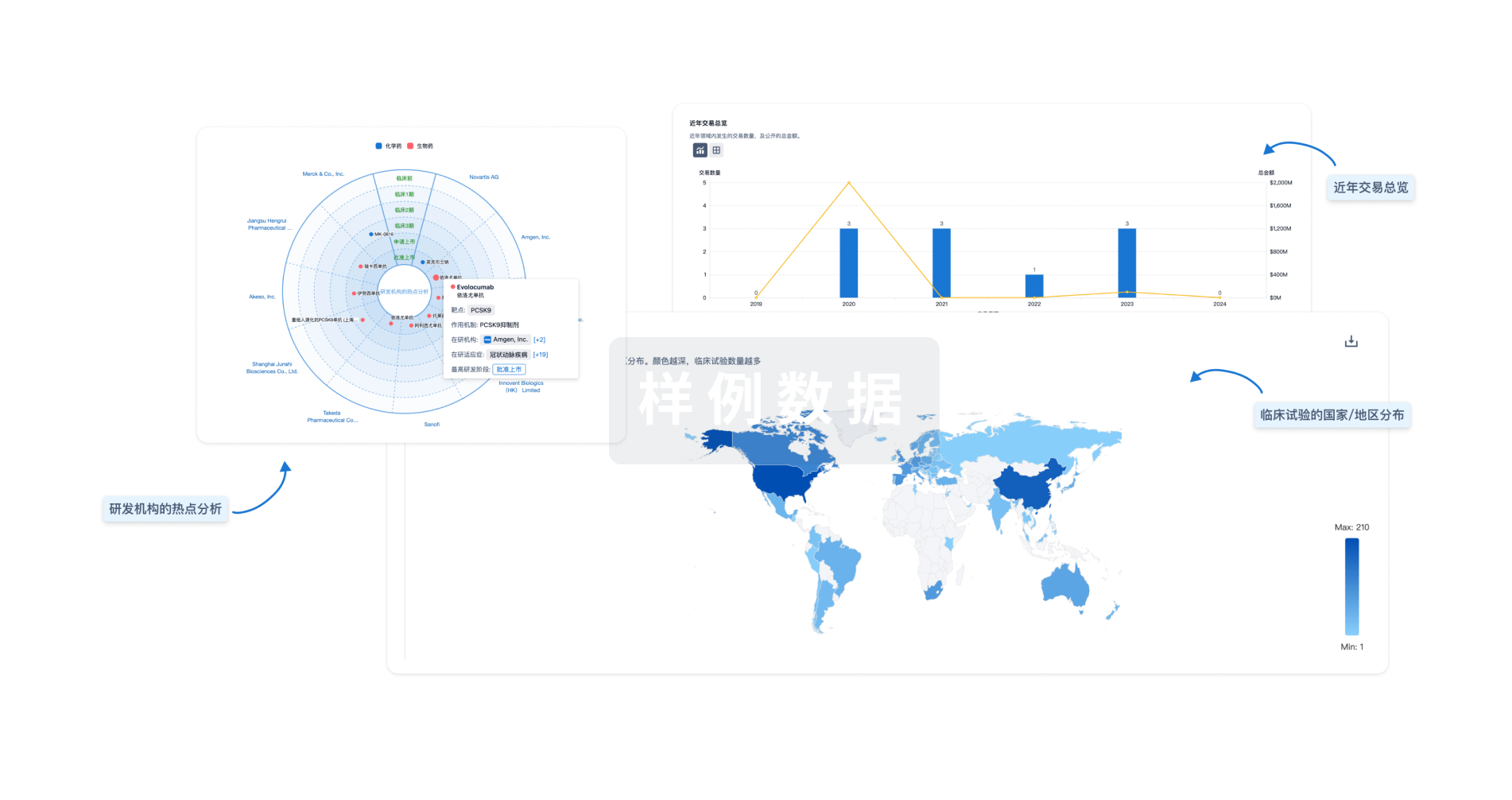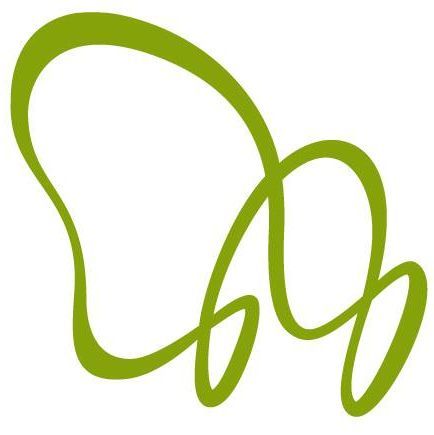预约演示
更新于:2025-05-07
TFs and related regulators x HIF-1α
更新于:2025-05-07
基本信息
关联
5
项与 TFs and related regulators x HIF-1α 相关的药物作用机制 EP300抑制剂 [+1] |
在研机构 |
原研机构 |
在研适应症 |
非在研适应症- |
最高研发阶段药物发现 |
首次获批国家/地区- |
首次获批日期1800-01-20 |
作用机制 EP300抑制剂 [+1] |
在研机构- |
原研机构 |
在研适应症- |
最高研发阶段撤市 |
首次获批国家/地区- |
首次获批日期1800-01-20 |
作用机制 HIF-1α抑制剂 [+1] |
在研机构- |
在研适应症- |
最高研发阶段终止 |
首次获批国家/地区- |
首次获批日期1800-01-20 |
6
项与 TFs and related regulators x HIF-1α 相关的临床试验RBR-76j763k
Treatment with Menadione in patients with Gastric Cancer in the Unified Health System
开始日期2022-02-01 |
申办/合作机构- |
NCT01393821
A Randomized, Double-Blind Placebo-Controlled Exploration of a Topical Menadione-Containing Lotion to the Face for Prevention and Palliation of Epidermal Growth Factor Receptor Inhibitor-Induced Cutaneous Discomfort and Psychological Distress
This clinical trial studies menadione topical lotion in treating skin discomfort and psychological distress in patients with cancer receiving panitumumab, erlotinib hydrochloride, or cetuximab. Menadione topical lotion may prevent rash or other skin discomfort and help alleviate psychological distress and pain in patients receiving treatment with panitumumab, erlotinib hydrochloride, or cetuximab
开始日期2012-01-23 |
申办/合作机构  Mayo Clinic Mayo Clinic [+1] |
NCT01094444
Placebo-controlled Trial Investigating the Effect of Vitamin K3-lotion for the Treatment of Cetuximab Induced Folliculitis
The study aims to explore the benefit of topical vitamin K3 lotion for the reactivation/rephosphorylation of EGF-receptor in the skin and the possible reduction in cutaneous side effects of EGFr-inhibition.
Primary aim: The possible reduction of cutaneous side effects: folliculitis, dryness and redness of the skin.
Secondary aim: To explore any possible side effects of topical vitamin K3 lotion.
Methods: 36 patients with metastatic colorectal cancer or metastatic head and neck cancer allocated to treatment with chemotherapy and biweekly cetuximab. Two equally sized areas of at least 10x10 cm on the back or chest of the patient is marked. Patients receive in a double blinded procedure placebo lotion on one side and vitamin K3 lotion on the other side. The treatment may last for a maximum of two months and the patients are followed biweekly with photos, VAS-scores, questionnaires and CTCAE estimations. The patient will be able to take weekly photos at home during the weeks they are not seen at the outpatient clinic. During the treatment all other skin products or antibiotics is allowed and will be carefully registered by the health care professionals in the outpatient clinic.
The patient may enter the trial in two different ways: 18 patients start treatment with study lotions at the time they start treatment with cetuximab. The other 18 patients start treatment with study lotions when folliculitis appears.
Patients are asked for 1.5 mm skin biopsies of both study areas of the skin before start of treatment and after 4 weeks of treatment with placebo lotion and vitamin K3 lotion. These biopsies will be investigated for EGFr, phosphorylated EGFr and other central downstream mechanisms. The biopsy part of the study is optional for the patient.
Primary aim: The possible reduction of cutaneous side effects: folliculitis, dryness and redness of the skin.
Secondary aim: To explore any possible side effects of topical vitamin K3 lotion.
Methods: 36 patients with metastatic colorectal cancer or metastatic head and neck cancer allocated to treatment with chemotherapy and biweekly cetuximab. Two equally sized areas of at least 10x10 cm on the back or chest of the patient is marked. Patients receive in a double blinded procedure placebo lotion on one side and vitamin K3 lotion on the other side. The treatment may last for a maximum of two months and the patients are followed biweekly with photos, VAS-scores, questionnaires and CTCAE estimations. The patient will be able to take weekly photos at home during the weeks they are not seen at the outpatient clinic. During the treatment all other skin products or antibiotics is allowed and will be carefully registered by the health care professionals in the outpatient clinic.
The patient may enter the trial in two different ways: 18 patients start treatment with study lotions at the time they start treatment with cetuximab. The other 18 patients start treatment with study lotions when folliculitis appears.
Patients are asked for 1.5 mm skin biopsies of both study areas of the skin before start of treatment and after 4 weeks of treatment with placebo lotion and vitamin K3 lotion. These biopsies will be investigated for EGFr, phosphorylated EGFr and other central downstream mechanisms. The biopsy part of the study is optional for the patient.
开始日期2010-05-01 |
申办/合作机构 |
100 项与 TFs and related regulators x HIF-1α 相关的临床结果
登录后查看更多信息
100 项与 TFs and related regulators x HIF-1α 相关的转化医学
登录后查看更多信息
0 项与 TFs and related regulators x HIF-1α 相关的专利(医药)
登录后查看更多信息
5,792
项与 TFs and related regulators x HIF-1α 相关的文献(医药)2025-12-01·Human & Experimental Toxicology
The acute and sub-chronic toxicological effects of 3-amino-9-ethylcarbazole (AEC) on zebrafish
Article
作者: Szepesi-Bencsik, Dóra ; Bakos, Katalin ; Rácz, Gergely ; Bock, Illés ; Vásárhelyi, Erna ; Urbányi, Béla ; Griffitts, Jeffrey Daniel ; Kriszt, Balázs ; Volner, Cintia ; Szabó, Balázs P. ; Csenki, Zsolt ; Szabó, István
2025-08-01·Tissue and Cell
Unraveling the role of HIF-1α in allergic rhinitis: A key regulator of epithelial barrier integrity via PI3K pathway
Article
作者: Tang, Ming ; He, Lei ; Wu, Zhuo ; Zhou, Changzeng ; Zhang, Guxuan ; Zhang, Yongbo
2025-08-01·Reproductive Toxicology
Bisphenol-A-induced ovarian cancer: Changes in epithelial diversity, apoptosis, antioxidant and anti-inflammatory mechanisms
Article
作者: Rajaura, Sumit ; Rambabu ; Singh, Ashutosh ; Nivedita ; Ahmed, Mohammad Z ; Bhardwaj, Nitin
73
项与 TFs and related regulators x HIF-1α 相关的新闻(医药)2025-05-01
·小药说药
-01-引言肿瘤是一个复杂的生态系统,其中癌症细胞和多种宿主细胞之间的相互作用影响疾病的进展和治疗反应。在肿瘤进展过程中,癌症细胞采用多种途径来逃避免疫攻击,例如下调抗原提呈机制或诱导抑制性免疫检查点分子,而免疫压力在肿瘤的发展和转移扩散过程中促进克隆进化。同时,癌症细胞劫持免疫细胞,如中性粒细胞、巨噬细胞和调节性T细胞(Treg),以协调免疫抑制性肿瘤微环境(TME)。这反过来促进免疫逃逸,促进血管和细胞外基质的重塑,并支持癌症进展和治疗抵抗。异常免疫反应被广泛认为是癌症的标志,并为癌症治疗提供了有吸引力的靶点。因此,我们有必要深入了解癌症细胞的内在特征,包括遗传变异、信号通路调节和代谢改变,它们在协调免疫景观的组成和功能状态方面发挥关键作用,并影响免疫调节策略的治疗效益。-02-一、遗传改变癌基因、抑癌基因或DNA损伤修复基因中的特定癌症细胞固有遗传改变有助于调节癌症免疫状况。癌基因癌症细胞中不同的致癌基因通过不同的机制调节免疫行为,这些机制因癌症类型、癌症分期和癌症部位而异。例如,KRAS突变通过IL-8诱导的炎症、IL-6介导的巨噬细胞和Treg细胞浸润、GM-CSF诱导的Gr1+CD11b+髓系细胞的扩增、IL-10和TGF-β介导的CD4+CD25−T细胞向Treg细胞的转化、以及抑制干扰素调节因子2(IRF2)和随后产生的CXCL3,从而导致CD8+T细胞抑制,髓系衍生抑制细胞(MDSCs)的迁移增强。MYC通过增强CD47和PD-L1表达来抑制抗肿瘤免疫,从而削弱巨噬细胞和T细胞的募集。此外通过分泌IL-1β,阻断细胞毒性T细胞、NK细胞和树突状细胞的浸润,并增强支持肿瘤的巨噬细胞和中性粒细胞的浸润。KRAS突变和MYC还通过与MYC相互作用的锌指蛋白1(MIZ1)产生协同作用,介导IFN-β的抑制以及CCL9和IL-23的分泌,增强PD-L1+巨噬细胞浸润,抑制B细胞、T细胞和NK淋巴细胞驱动免疫逃避。此外,突变的表皮生长因子受体(EGFR)通过降低PD-L1表达来驱动免疫逃逸,通过IRF1介导的CXCL10下调阻碍CD8+T细胞募集,并通过CD73依赖性腺苷生成或JNK–JUN介导的CCL2上调促进Treg细胞浸润。人表皮生长因子受体2(HER2)扩增导致主要组织相容性复合物I类(MHC-I)的下调和TANK结合激酶1(TBK1)的磷酸化,其抑制下游cGAS–STING信号传导和IFNβ产生,导致免疫逃避。抑癌基因抑癌基因通过不同的环境依赖机制调节免疫。例如,研究发现Trp53的缺失通过WNT配体介导的巨噬细胞极化和IL-1β的产生驱动免疫抑制,导致中性粒细胞的全身聚集,从而CD8+T细胞的抑制和CXCL17、CCL3、CCL11、CXCL5和M-CSF介导的巨噬细胞和Treg细胞的募集。TP53的突变与PD-L1表达相关,并通过CXCL2分泌调节免疫抑制中性粒细胞的募集,通过NF-κB介导的IL-8调节慢性炎症,并且结合TBK1抑制下游cGAS–STING–IRF3信号传导和IFN-β1的产生,其减少T细胞和NK细胞浸润并增强巨噬细胞极化。相反,TP53的功能增益突变与新抗原表达,以及IFN-γ和CXCL9表达相关,这支持抗肿瘤免疫。在KRAS突变肿瘤中,丝氨酸/苏氨酸激酶11(STK11)的失活通过粒细胞集落刺激因子(G-CSF)、IL-6和CXCL7的表达刺激免疫抑制中性粒细胞的积聚。此外,KRAS和STK11突变肿瘤中PD-L1的表达会导致对免疫检查点阻断(ICB)的抵抗。最后,PTEN丢失通过CCL2和VEGF的分泌减少CD8+T细胞浸润,并激活PI3K信号增强PD-L1的表达,以及NF-κB介导的CCL20、CXCL1、IL-6和IL-23分泌增强Treg细胞和髓系细胞浸润,并通过IL-1β和M-CSF驱动局部MDSC扩增。DNA损伤修复机制的遗传改变癌症细胞中的错配修复(MMR)缺陷会导致突变、新抗原和细胞中DNA的积累,从而触发cGAS–STING依赖性的T细胞浸润,免疫检查点分子如PD-1、PDL1、CTLA-4和LAG-3在浸润免疫细胞上的表达增强。在BRCA1突变的肿瘤中,双链DNA积聚在细胞中,并引发与CD8+T细胞浸润相关的cGAS–STING介导的炎症反应。cGAS–STING还促进免疫抑制性髓系细胞、巨噬细胞、Treg细胞和耗竭的PD1+T细胞的募集,以及VEGF的上调。DNA传感基因和下游介质(如IFN-β或CCL5)的遗传缺失或表观遗传沉默可介导BRCA1突变肿瘤的免疫逃逸,以及PD-L1的表达增强。相反,BRCA2突变肿瘤显示cGAS–STING介导的各种T细胞群的富集。-03- 二、表观遗传修饰除了遗传改变外,表观遗传改变也是癌症细胞的一个共同特征,在核结构和基因转录中起着至关重要的作用。癌症表观基因组会发生各种变化,包括DNA甲基化、组蛋白修饰、染色质重塑和非编码RNA的失调。越来越多的证据表明,癌症细胞中发生的表观遗传变化也会影响与免疫系统的串扰。DNA甲基化由于超级增强子(SE)的形成,炎症基因的DNA去甲基化导致CXC趋化因子配体(CXCL)介导的中性粒细胞募集,而总体低甲基化与PD-L1、IL-6和VEGF的表达增强相关。而DNA(超)甲基化可降低编码PD-L1的基因CD274和编码MHC-I的HLA基因的表达,而编码cGAS–STING的基因通过启动子甲基化的转录抑制增强MHC-I表达和T细胞识别。异柠檬酸脱氢酶1(IDH1)或IDH2的突变通过将α-酮戊二酸转化为(R)-2-羟基戊二酸(2HG)来诱导全局超甲基化。而编码PD-L1、CXCL9和CXCL10免疫相关基因的转录抑制会损害IDH突变肿瘤中CD8+T细胞的浸润,G-CSF的转录激活会增强非抑制性中性粒细胞和前中性粒细胞的浸润。组蛋白甲基化组蛋白H3在Lys27发生三甲基化(H3K27me3),在DNA低甲基化的背景下,抑制编码MHC-I、CXCL9和CXCL10的基因,并减少CD8+T细胞浸润。癌症细胞中的多梳抑制复合物2(PRC2)活性介导H3K27me3,抑制G-CSF和IL-6的表达并诱导性一氧化氮合成酶阳性(iNOS+)巨噬细胞、中性粒细胞和T细胞的招募。ARID1A是SWI/SNF复合物的DNA结合亚基, ARID1A的遗传突变会抑制IFN-γ诱导基因转录和CXCL9、CXCL10和CXCL11的表达,从而抑制T细胞浸润。组蛋白乙酰化组蛋白乙酰化通过组蛋白乙酰转移酶1(HAT1)调节免疫应答,HAT1介导CD274和组蛋白去乙酰化酶(HDACs)的表达,HDACs抑制编码PD-L1和PD-L2的基因的表达,以及CCL5、CXCL9和CXCL10的表达,从而损害T细胞浸润。-04-三、细胞内信号通路癌症细胞的一个关键特征是异常信号传导,这是由编码或非编码DNA区域的遗传或表观遗传改变以及生长因子和代谢等外部信号驱动的。WNT–β-catenin通路激活的癌症细胞内固有WNT–β-catenin信号与免疫排斥相关,但其潜在机制仍不明确。WNT–β-catenin通过诱导ATF3表达阻断CD103+树突状细胞的募集和T细胞启动,并抑制CCL4或CCL5分泌。TGF-β通路淋巴细胞抗原LY6K和LY6E在癌症细胞中的过表达激活TGF-β信号转导和SMAD2/3磷酸化,导致NK细胞活性降低和Treg细胞浸润增强。αVβ6整合素的上调通过激活TGF-β和SMAD2/3磷酸化来调节SOX4的表达,SOX4抑制多种I型干扰素诱导基因和编码MHC-I的基因,同时增强PD-L1表达,这会损害细胞毒性T细胞介导的免疫。此外,癌症细胞衍生的TGF-β介导CD4+T细胞向Treg细胞的转化。而SMAD4的敲除会导致肿瘤细胞中TGF-β信号的失活,这增强了CCL9的表达和未成熟髓系细胞的募集。NF-κB信号通路PD-L1的表达受癌症细胞内NF-κB信号转导的转录调控,其途径是通过MUC1-c与CD274启动子上的NF-κB亚基p65的直接结合,或通过TGF-β介导的MRTFA的表达。MUC1-C和p65还驱动ZEB1转录,这导致编码CCL2、IFN-γ、GM-CSF和TLR9的基因受到抑制,CD8+T细胞浸润受损。相反,免疫疗法和化疗诱导的NF-κB和p300–CBP的活化增强了MHC-I抗原呈递和CD8+T细胞识别。HIF信号通路缺氧诱导的缺氧诱导因子1α(HIF1α)信号通路通过增强CD274的表达和抑制编码CCL2和CCL5的基因来驱动免疫逃避,这会损害NK细胞和CD8+T细胞的浸润,而HIF2α诱导CXCL1的表达并促进肿瘤的中性粒细胞募集。-05-四、代谢改变在肿瘤的发生和进展过程中,癌症细胞及其TME不断暴露在恶劣的条件和压力下。为了生存和维持生长,需要细胞适应和代谢重编程。癌症代谢重编程与免疫抑制和逃避有关。肿瘤细胞消耗大量葡萄糖,这与T细胞浸润不良有关。高葡萄糖消耗导致乳酸的产生并分泌到肿瘤微环境中,乳酸在肿瘤微环境中以免疫抑制的方式起作用,降低NK细胞的细胞溶解活性,并增强PD-1表达和Treg细胞的免疫抑制能力。此外,乳酸增加了肿瘤和脾脏中MDSC的频率,并在肿瘤相关巨噬细胞中诱导“M2样”极化。此外,癌症细胞中谷氨酰胺的消耗降低CD8+T细胞的活化和浸润,并通过增加G-CSF的分泌增强MDSC的募集。-06-结语近年来,关于癌症细胞-免疫细胞串扰的研究大幅增长。跨越式发展的技术进步,包括单细胞多组学技术,基于人工智能的系统生物学方法以及体内体细胞基因编辑策略,有望加速这些研究的深入,并最终形成针对个体患者的新型免疫干预策略。展望未来,个性化免疫干预策略将需要综合多组学肿瘤表征、免疫分析、液体活检样本的动态监测以评估基于血液的生物标志物、计算数据分析和转化,以及临床相关体外和体内模型的机制研究。有关癌症细胞内在和癌症细胞外部特征的知识体系将共同决定局部和系统免疫状况,以指导临床决策,并为针对患者个性化新型治疗方法开辟道路。参考资料:1.Mechanisms driving the immunoregulatory function of cancer cells. Nat Rev Cancer.2023 Jan 30.公众号内回复“ADC”或扫描下方图片中的二维码免费下载《抗体偶联药物:从基础到临床》的PDF格式电子书!公众号已建立“小药说药专业交流群”微信行业交流群以及读者交流群,扫描下方小编二维码加入,入行业群请主动告知姓名、工作单位和职务。
免疫疗法AACR会议临床1期
2025-04-30
·小药说药
PD-1/PD-L1基本信息PD-1:PD-1属于CD28超家族,由PDCD1基因编码,包含5个外显子。PD-1蛋白包含一个IgV型的胞外域、一个柄状结构域,一个跨膜域和一个胞内域,胞内域包含免疫受体酪氨酸基抑制性基序(ITIM)和免疫受体酪氨酸基开关基序(ITSM)。PD-L1:PD-L1属于B7家族,由CD274基因编码,是一个33kDa的I型跨膜蛋白,包含290个氨基酸残基。PD-L1包含IgV样和IgC样胞外域、一个疏水的跨膜域和一个短的胞内尾,其中也包含ITIM和ITSM基序。PD-1及其配体PD-L1的结构示意图PD-1在不同免疫细胞中的作用PD-1在T细胞、B细胞、NK细胞、树突状细胞(DCs)和巨噬细胞上的表达上调。PD-1与PD-L1结合后,通过招募SHP-2和SHP-1去磷酸化,阻断下游信号传导,从而抑制B细胞和T细胞的激活、增殖以及细胞因子产生,同时也抑制巨噬细胞、树突状细胞和自然杀伤细胞的功能。肿瘤细胞和树突状细胞均可表达PD-1和PD-L1。巨噬细胞上的PD-1可由脂多糖(LPS)刺激诱导。具体来说,PD-1在不同免疫细胞中的作用如下:T细胞:PD-1在T细胞激活、耐受和耗竭中起关键作用,影响肿瘤发生、炎症和感染。PD-1的异常表达与多种疾病相关,包括黑色素瘤、结直肠癌、非小细胞肺癌等。B细胞:PD-1通过抑制B细胞激活、增殖和细胞因子产生来调节B细胞功能。PD-1在B细胞中的异常表达与类风湿性关节炎、某些肿瘤和乙型肝炎相关。树突状细胞:PD-1在DCs上的表达与免疫抑制相关,影响T细胞的激活和功能。NK细胞:PD-1在NK细胞上的表达与多种病理状态相关,影响其抗肿瘤功能。巨噬细胞:PD-1在巨噬细胞上的表达与免疫抑制和肿瘤进展相关。其他细胞:PD-1在其他免疫细胞(如ILCs、单核细胞和中性粒细胞)中的作用仍在研究中。PD-1在不同免疫细胞中的作用示意图T细胞与PD-1/PD-L1轴T细胞通过TCR和PD-1的相互作用:a)PD-1与PD-L1是维持免疫平衡的关键分子。正常情况下,抗原呈递细胞(APCs)与T细胞的相互作用会阻断PD-1/PD-L1轴。在这种情况下,APCs会抑制其PD-L1与T细胞的PD-1的相互作用,通过与PD-1的结合,这种机制促进了T细胞通过其MHC-TCR和多条信号通路的正常活性,能够有效减少自身免疫细胞对自身组织的攻击。此外,PD-1/PD-L1在细胞黏附、迁移、记忆T细胞的形成以及代谢等诸多方面也发挥着重要作用,还参与组织和器官的发育、再生等过程。b)异常情况下,机体允许T细胞的PD-1与肿瘤细胞的PD-L1相互作用。在这种情况下,这种作用会阻断T细胞的正常作用途径,导致细胞因子产生功能障碍、增殖减少和细胞毒性降低,从而促进肿瘤的进展。T细胞与PD-1/PD-L1在不同情况下的作用机制示意图PD-1/PD-L1轴在肿瘤微环境中起着关键作用,通过中和免疫系统促进肿瘤进展和逃逸。PD-L1与T细胞上的PD-1结合会导致T细胞功能障碍、中和、耗竭以及IL-10的产生,从而促进肿瘤的生长。此外,PD-1/PD-L1轴激活PI3K/AKT、MAPK和JAK-STAT等信号通路,这些通路对细胞增殖、存活和免疫逃逸至关重要。PD-1/PD-L1轴的免疫逃逸机制:抗原呈递细胞(APCs)通过主要组织相容性复合体(MHC)将肿瘤抗原递呈给T细胞受体(TCR),当MHC-抗原复合物特异性地结合到TCR时,会触发一系列信号转导,包括磷脂酰肌醇信号通路和丝裂原活化蛋白激酶信号通路,从而激活效应T细胞的免疫反应。当PD-L1与PD-1结合时,PD-1细胞质区域的ITSM和ITIM结构域中的酪氨酸残基发生磷酸化,招募并激活SHP2。随后,被招募的SHP-2介导TCR相关CD3和ZAP70信号复合体的去磷酸化,同时抑制CD28共刺激信号。这进一步减弱了下游TCR信号强度和细胞因子(如IL-2)的分泌,最终抑制了T细胞的功能。免疫逃逸机制示意图PD-1/PD-L1的表达调控以及相关信号通路PD-1:PD-1的表达受到多种因素的调控,例如抗原信号刺激以及炎症因子等。在急性感染和慢性感染中,PD-1表达的调控机制存在显著差异。在肿瘤免疫环境中,持续的TCR信号刺激可促使PD-1表达上调,进而诱导免疫耐受的发生。PD-1信号通路概述:PD-1对TCR信号的影响:如上文所述。PD-1对γc家族细胞因子信号的影响:PD-1通过直接靶向γc来拮抗γc家族细胞因子介导的免疫激活,通过SHP-2去磷酸化γcY357,导致其失活,并通过MARCH5介导的K27连接多泛素化和溶酶体降解γc。PD-1信号通路简略示意图PD-1在肿瘤细胞中的复杂调控机制:a)肿瘤细胞内源性PD-1的细胞内信号传导。PD-1的免疫球蛋白样细胞外结构域与PD-L1的免疫球蛋白样细胞外结构域相互作用,触发下游信号通路,包括mTOR信号通路、Ras/MAPK信号通路、AKT/ERK信号通路、Hippo信号通路和Wnt/β-catenin信号通路。这些信号通路在多种生物学过程中发挥着关键作用,如增殖、凋亡、细胞周期进程、上皮-间质转化(EMT)、转移扩散、线粒体活性氧(mROS)的产生、放化疗耐药性的形成以及癌症干细胞特性的维持。例如,PD-1信号通路在肿瘤细胞中的激活可导致mTOR通路下游分子的磷酸化增加,如核糖体S6蛋白(p-S6)。这些信号通路中关键分子的磷酸化可以对肿瘤细胞的行为和特性产生一系列影响,促进肿瘤的进展、侵袭性以及对治疗干预的耐药性。b)翻译后调控。翻译后调控的一个关键方面是FBW7作为PD-1蛋白的E3泛素连接酶的作用。FBW7促进PD-1在Lys233残基处的K48连接的多泛素化,从而标记其被蛋白酶体降解。这一过程对于控制肿瘤细胞中PD-1蛋白的水平至关重要。另一个重要的翻译后调控机制涉及MDM2,它增强了糖基化PD-1与糖苷酶NGLY1之间的结合。这种相互作用促进了PD-1的脱糖基化和由NGLY1介导的泛素化降解。此外,由FUT8介导的PD-1上特定残基(N49和N74)的岩藻糖基化对于PD-1的功能性定位至关重要。核心岩藻糖基化的缺失与PD-1被泛素-蛋白酶体系统降解的增强有关。(c)转录调控。PDCD1的转录受到多种转录因子的调控,包括p53、YB-1、NF-κB、CYY61/CTGF和P300/CBP。PD-1在肿瘤细胞中的复杂调控机制PD-L1:基因层面:PD-L1启动子区域的表观遗传修饰,包括DNA甲基化、组蛋白甲基化和乙酰化,在PD-L1表达的调控中也起着重要作用。例如,TNF-α/TGF-β1通过降低DNMT1(DNA甲基转移酶)水平诱导PD-L1启动子的去甲基化,导致PD-L1上调,从而发挥免疫抑制作用。在转录水平上,PD-L1表达主要由转录因子调控,包括STAT、MYC、NF-κB、IRF1、AP-1和HIF-1α,以及信号通路效应分子,如MAPK/PI3K/Akt、JAK/STAT3和EGFR/MAPK。PD-L1基因水平上的表达调控示意图转录和翻译后修饰层面:非编码RNA(如miR-34、miR-200和miR-197)可以通过直接结合PD-L1的3'非翻译区(3'UTR)来抑制PD-L1 mRNA的表达。PD-L1 mRNA的m6A修饰对于调控PD-L1的表达和稳定性以及介导肿瘤免疫逃逸至关重要。例如,去甲基化酶(如FTO和ALKBH)可以去除PD-L1 mRNA上的m6A修饰,增加其稳定性,并促进PD-L1的高表达。METTL3/IGF2BP3轴通过上调PD-L1 mRNA的m6A修饰来增强其稳定性,从而进一步促进肿瘤免疫逃逸。此外,翻译后修饰,包括磷酸化、泛素化、糖基化和棕榈酰化,可以通过影响PD-L1蛋白在癌细胞中的活性、稳定性和膜表达来调控PD-L1蛋白的表达。PD-L1表达在转录后和翻译后的调控机制不同形式的表达层面:多种转录因子直接参与PD-L1表达的调节,影响其在不同细胞环境中的上调。一旦合成,PD-L1 mRNA转移到细胞质中,在那里被翻译成蛋白质,随后呈现在癌细胞表面。这种表达有助于免疫逃逸机制的关键相互作用。非编码RNA(如miRNA、circRNA和lncRNA)在诱导PD-L1降解方面发挥重要作用。这些ncRNA通过各种机制途径调节PD-L1的水平,从而降低其总体表达。PD-L1还被包裹在细胞外囊泡中,特别是以小囊泡的形式出现,介导细胞间通信并影响肿瘤动态。这种包裹途径通过促进免疫抑制信号的系统性传播,在推进肿瘤免疫逃逸策略中起到了关键作用。PD-L1多种形式的表达谱PD-1/PD-L1信号通路机制概述如下图:PD-1/PD-L1的病理作用机制PD-L1在癌症中的作用:PD-L1在多种癌症中表达上调,与肿瘤的侵袭性、增殖和预后不良相关。例如,在非小细胞肺癌(NSCLC)中,PD-L1的高表达与肿瘤增殖、侵袭性增加和患者生存率降低相关。在黑色素瘤中,PD-L1在恶性黑色素细胞和免疫细胞上的表达与免疫治疗的抗肿瘤反应相关。在膀胱癌中,PD-L1作为生物标志物与肿瘤分级和疾病进展相关。在前列腺癌中,PD-L1的表达在转移性去势抵抗性前列腺癌(mCRPC)中更高,被认为是高风险患者的不良预后标志物。PD-L1在癌症中的作用简图PD-L1对肿瘤发展的作用:PD-L1不仅促进肿瘤细胞逃避免疫监视,还能以免疫独立的方式促进肿瘤进展。在肿瘤细胞中高表达的PD-L1可以通过与核输入蛋白KPNB1结合进入细胞核,并发挥促癌作用。核PD-L1还可以触发免疫检查点基因(包括PD-L2和VISTA)的上调,从而增强PD-1抑制的抗肿瘤反应。在缺氧条件下,用TNFα和CHX处理可以促进PD-L1的核转位,然后PD-L1与p-Stat3-Y705相互作用。随后,p-Stat3-Y705结合到GSDMC启动子区域,导致GSDMC基因表达上调。此外,GSDMC被caspase-8裂解并激活,触发细胞焦亡以及肿瘤缺氧区域的坏死。PD-L1对肿瘤本身的影响PD-1/PD-L1在移植和自身免疫性疾病中的作用:在器官移植过程中,PD-1在移植组织中浸润的T细胞表面高度表达。PD-1/PD-L1介导的负性调节信号可以抑制T细胞的过度激活,诱导免疫耐受,并在术后有效减少宿主与供体之间的免疫排斥。阻断PD-1/PD-L1会促进移植组织中浸润的T细胞增殖,加剧移植后的免疫排斥反应,并导致严重且持续的组织损伤。同样,PD-1和PD-L1信号之间的平衡被打破也会导致许多自身免疫性疾病的发生,如1型糖尿病(T1DM)、多发性硬化症(MS)、系统性红斑狼疮(SLE)和类风湿关节炎(RA)。PD-1/PD-L1在移植和自身免疫性疾病中的作用示意图PD-1/PD-L1的致瘤机制:PD-1/PD-L1通路促进效应T细胞的耗竭和凋亡。耗竭的T细胞(Tex)表现为高表达抑制性受体(如PD-1、LAG3和TIGIT)、细胞因子(如TNF、IL-2和IFN-γ)分泌减少、代谢改变以及增殖能力和存活能力受损。PD-1/PD-L1通过降低PI3K/Akt/mTOR和S6的磷酸化,同时增强PTEN,促进诱导性调节性T细胞(iTregs)的生成和发展,从而增强Treg细胞的免疫抑制功能并诱导免疫耐受。PD-1/PD-L1可促进肿瘤相关巨噬细胞(TAM)向M2表型极化,释放大量成纤维细胞生长因子、VEGF、TNF-α等细胞因子,促进血管生成并支持癌细胞的免疫抑制、侵袭和转移,加速癌症进展。自然杀伤细胞(NK细胞)上的PD-1与癌细胞上的PD-L1结合,抑制NK细胞的脱颗粒和细胞毒性功能,降低其杀伤肿瘤细胞的能力,促进肿瘤免疫逃逸。使用PD-1和PD-L1抑制剂可能会重新激活上述免疫细胞的抗肿瘤免疫反应。PD-1/PD-L1信号通过对免疫细胞的调控导致肿瘤形成的机制示意图PD-1/PD-L1对肿瘤的代谢作用:PD-1/PD-L1信号通过破坏有氧糖酵解,改变细胞能量合成和代谢途径,从而促进脂肪酸氧化(FAO)成为T细胞的主要能量来源。此外,NAD⁺代谢组分NAMPT可以通过Stat1依赖的IFN-γ信号通路增强肿瘤细胞中PD-L1的表达,进而抑制T细胞功能,重塑局部肿瘤微环境,最终对肿瘤的转移、复发和预后产生显著影响。此外,肠道微生物组也可以改善肿瘤进展并增强T细胞免疫反应,提示其在提高PD-1阻断疗法效果方面的潜在应用价值。PD-1/PD-L1信号影响肿瘤代谢的示意图PD-1/PD-L1轴的免疫治疗策略靶向PD-1/PD-L1轴的单抗药物:靶向PD-1/PD-L1轴的双抗药物:BsAbs的分类和作用机制:BsAbs分为非IgG格式和IgG格式,IgG-like剂保留Fc介导的抗体效应功能,而Fc-free BsAbs缺乏这些功能。BiTEs(双特异性T细胞接合剂)和Triomabs是主要的BsAb格式。BsAbs的Fc域可能导致非靶向毒性,如细胞因子释放综合征(CRS)。抗TGFβ×PD-L1 BsAb:TGFβ在癌症免疫学和免疫治疗中扮演双重角色,既能抑制肿瘤发生,也能促进肿瘤进展。M7824是一种新型的双功能融合蛋白,结合了抗PD-L1域和TGFβ受体,同时靶向两个免疫抑制途径;M7824在非小细胞肺癌(NSCLC)患者中显示出显著的临床疗效。抗CD47×PD-L1 BsAb:CD47在肿瘤细胞上表达,向巨噬细胞传递“不要吃我”的信号。抗CD47×PD-L1 BsAb通过阻断CD47/SIRPα和PD-1/PD-L1信号通路,增强抗肿瘤免疫反应。抗VEGF/PD-1和抗VEGF/PD-L1 BsAb:VEGF由缺氧TME诱导,促进血管增生和免疫抑制。抗VEGF×PD-1和抗VEGF×PD-L1 BsAbs展示了在多种癌症中抑制血管生成和激活免疫反应的潜力。抗4-1BB×PD-L1 BsAb:4-1BB(CD137)是一种在激活的NK和T细胞上表达的共刺激分子。抗4-1BB×PD-L1 BsAb通过结合4-1BB激动剂与PD-1/PD-L1抑制剂,增强肿瘤特异性T细胞反应。抗LAG-3×PD-L1 BsAb:LAG-3在激活的T细胞和NK细胞上表达,传递抑制信号。抗LAG-3×PD-L1 BsAb通过阻断LAG-3和PD-1/PD-L1信号通路,增强抗肿瘤免疫反应。抗PD-1/CTLA-4 BsAb:CTLA-4和PD-1是抑制T细胞功能的免疫检查点。抗PD-1/CTLA-4 BsAb通过同时靶向PD-1和CTLA-4,增强抗肿瘤免疫反应。靶向PD-1/PD-L1轴的PROTACs:PROTACs是一种新型的药物设计技术,通过招募E3泛素连接酶来靶向降解特定蛋白质。包括Compound 22、AC-1、AbTACs、CDTACs、Compound 21a、Peptide-PROTACs、R2PD1、SP-PROTAC和Liner peptide PROTAC。这些PROTACs通过不同的机制降解PD-1/PD-L1蛋白,从而增强免疫治疗的效果。例如,Compound 22可以通过溶酶体依赖途径降解PD-L1蛋白,而AC-1可以通过招募RNF43 E3连接酶来降解PD-L1(如下图)。靶向PD-1/PD-L1轴的小分子抑制剂:联合治疗策略:1. 化疗与PD-1/PD-L1联合:化疗药物如蒽环类和奥沙利铂可诱导免疫原性细胞死亡,刺激抗肿瘤免疫反应。2. 放疗与PD-1/PD-L1联合:放疗可诱导免疫原性细胞死亡,增强T细胞浸润,扩大肿瘤微环境(TME)中的T细胞受体(TCR)库;放疗可上调肿瘤细胞上的PD-L1表达,增加MHC-I表达,缓解对PD-1/PD-L1抑制剂的耐药性。3. 抗血管生成抑制剂与PD-1/PD-L1联合:抗血管生成抑制剂可阻断促血管生成通路,促进血管正常化,改善肿瘤灌注和氧合,恢复缺氧的TME。抗血管生成抑制剂可重塑TME,促进T细胞浸润和树突状细胞(DC)成熟,增强M1型巨噬细胞分化,降低调节性T细胞(Treg)和髓系来源的抑制细胞(MDSC)比例。α-PD-1/PD-L1与化疗、放疗或抗血管生成抑制剂联合使用的协同抗肿瘤效果及机制示意图免疫耐药和副作用1.新辅助免疫治疗的疗效:新辅助免疫治疗,特别是免疫治疗联合化疗,比单药治疗或双免疫治疗能获得更高的ORR、MPR和pCR。例如,在头颈部癌症中,NCT03342911试验显示,nivolumab联合化疗的MPR为65%,pCR为35%。在乳腺癌中,KEYNOTE-522试验显示,pembrolizumab联合化疗的pCR为60%。2. 不良事件:尽管新辅助免疫治疗导致TRAEs增多,但大多数是可接受的,并且不会显著延迟手术。例如,在NCT02919683试验中,nivolumab联合ipilimumab治疗口腔鳞状细胞癌(OCSCC)的ORR为38%,MPR为4%,pCR为3%,且大多数患者经历了irAEs,但没有导致手术延迟。3. 病理缓解与生存率:研究发现,新辅助免疫治疗后达到病理缓解的患者,术后DFS较未达到病理缓解的患者有所提高。例如,在NCT02641093试验中,pembrolizumab联合化疗的ORR为8%,MPR为27%,pCR为13%。4. PD-1与PD-L1抑制剂的比较:在大多数实体瘤中,PD-1和PD-L1单药治疗的疗效没有显著差异,但PD-L1治疗引起的irAEs发生率显著低于PD-1。例如,在肺癌中,PD-1单药治疗的ORR为25%,而PD-L1单药治疗的ORR为22%。5. 手术相关并发症:大多数试验中未报告治疗相关的手术延迟。一些患者因疾病进展、严重的TRAEs或高手术风险而未接受手术,或拒绝手术。新辅助免疫治疗的ORR、MPR、pCR和不良事件PD-1/PD-L1轴在不同适应症的应用PD-1/PD-L1轴在多种适应症中都有应用肿瘤领域• 非小细胞肺癌(NSCLC):PD-1/PD-L1抑制剂已成为晚期NSCLC的重要治疗手段。如帕博利珠单抗被批准用于PD-L1高表达(TPS≥50%)的初治晚期NSCLC患者的一线治疗,其通过阻断PD-1/PD-L1轴,增强T细胞对肿瘤细胞的识别和杀伤能力,延长患者生存期。此外,阿特珠单抗联合化疗也被用于晚期NSCLC的一线治疗,可提高疗效和生存率。• 小细胞肺癌(SCLC):度伐利尤单抗联合化疗在SCLC的治疗中显示出一定疗效,能够延长患者的无进展生存期和总生存期,为SCLC患者提供了新的治疗选择。• 黑色素瘤:纳武利尤单抗和帕博利珠单抗等PD-1抑制剂在黑色素瘤的治疗中取得了显著成效,可显著提高患者的客观缓解率和生存率,已成为晚期黑色素瘤的一线治疗药物。此外,PD-1抑制剂还可与CTLA-4抑制剂联合使用,进一步增强免疫治疗效果。• 肾癌:PD-1/PD-L1抑制剂在肾癌的治疗中也显示出良好的疗效。例如,阿特珠单抗联合贝伐珠单抗被批准用于晚期肾癌的一线治疗,其通过双重免疫机制,抑制肿瘤血管生成和增强抗肿瘤免疫反应,延长患者生存期。• 膀胱癌:阿特珠单抗是首个被批准用于膀胱癌的PD-L1抑制剂,可用于治疗局部晚期或转移性膀胱癌,特别是对铂类化疗耐药或不耐受的患者,可显著提高患者的客观缓解率和生存率。• 头颈部鳞状细胞癌(HNSCC):帕博利珠单抗被批准用于复发或转移性HNSCC的治疗,其通过阻断PD-1/PD-L1轴,增强T细胞对肿瘤细胞的攻击,延长患者生存期。• 结直肠癌(CRC):纳武利尤单抗可用于治疗微卫星高度不稳定(MSI-H)或错配修复缺陷(dMMR)的晚期CRC患者,为这部分患者提供了新的治疗选择。• 肝细胞癌(HCC):纳武利尤单抗单药或联合伊匹木单抗被批准用于晚期HCC的治疗,其通过激活免疫系统,增强对肿瘤细胞的识别和杀伤能力,延长患者生存期。• 胃癌:帕博利珠单抗被批准用于PD-L1 CPS≥1的晚期胃癌或胃食管结合部癌的一线治疗,以及用于二线治疗复发或难治性胃癌患者,可显著提高患者的客观缓解率和生存率。• 食管癌:帕博利珠单抗和纳武利尤单抗等PD-1抑制剂在晚期食管癌的治疗中也显示出良好的疗效,可延长患者的生存期。• 妇科肿瘤:如子宫内膜癌,多塔利单抗被批准用于治疗错配修复缺陷(dMMR)或微卫星高度不稳定(MSI-H)的复发或晚期子宫内膜癌患者,为这部分患者提供了新的治疗选择。• 软组织肉瘤:PD-1/PD-L1抑制剂在软组织肉瘤的治疗中也进行了相关研究,但目前其疗效尚存在一定的争议,部分研究显示PD-L1表达水平可能与治疗反应相关,但不同研究结果存在差异,仍需进一步探索。• 儿童肿瘤:在儿童肿瘤中,PD-L1表达在一些儿童血液肿瘤如霍奇金淋巴瘤、弥漫大B细胞淋巴瘤、急性髓系白血病、急性淋巴细胞白血病和胶质瘤中有所观察到。目前也有相关的临床试验在探索PD-1/PD-L1抑制剂在儿童肿瘤中的应用,如纳武利尤单抗在儿童淋巴瘤中显示出一定的疗效,但在其他儿童实体瘤中单药治疗的活性有限。自身免疫性疾病领域• 系统性红斑狼疮(SLE):有研究表明,SLE患者中PD-1/PD-L1轴的表达存在异常,PD-1/PD-L1轴的调节可能有助于控制SLE的病情活动。一些研究正在探索PD-1/PD-L1抑制剂在SLE治疗中的潜在应用,但目前仍处于早期研究阶段。• 类风湿关节炎(RA):PD-1/PD-L1轴在RA的发病机制中也发挥着重要作用,其调节可能有助于减轻RA患者的炎症反应和关节损伤。相关研究正在进行中,以评估PD-1/PD-L1抑制剂在RA治疗中的安全性和有效性。神经系统疾病领域• 阿尔茨海默病(AD):研究表明,PD-1/PD-L1轴在AD的发病过程中可能参与调节神经炎症反应。通过调节PD-1/PD-L1轴,可能有助于减轻神经炎症,改善认知功能。目前,相关研究仍在探索阶段,以确定PD-1/PD-L1抑制剂在AD治疗中的潜在应用价值。• 帕金森病(PD):PD-1/PD-L1轴在帕金森病的发病机制中也受到关注。其调节可能对帕金森病的神经保护和疾病进展产生影响,但目前仍处于基础研究阶段,尚未进入临床应用。其他领域• 感染性疾病:在某些慢性感染性疾病中,如HIV感染、结核病等,PD-1/PD-L1轴的过度激活可能导致免疫细胞的耗竭。通过调节PD-1/PD-L1轴,可能有助于恢复免疫细胞的功能,增强机体对病原体的清除能力。相关研究正在进行中,以探索PD-1/PD-L1抑制剂在感染性疾病治疗中的潜在应用。• 心血管疾病:PD-1/PD-L1轴在动脉粥样硬化等心血管疾病的发生发展中可能发挥一定作用。其调节可能对炎症反应和血管内皮功能产生影响,从而影响心血管疾病的进程。目前,相关研究仍在探索阶段,以确定PD-1/PD-L1抑制剂在心血管疾病治疗中的潜在应用价值。公众号内回复“ADC”或扫描下方图片中的二维码免费下载《抗体偶联药物:从基础到临床》的PDF格式电子书!公众号已建立“小药说药专业交流群”微信行业交流群以及读者交流群,扫描下方小编二维码加入,入行业群请主动告知姓名、工作单位和职务。
免疫疗法细胞疗法
2025-04-28
·小药说药
-01-引言缺氧诱导因子(HIFs)是高度保守并受氧气丰度调节的转录因子,对各种生物适应有限的氧气供应至关重要。在缺氧发生时,HIFs可以直接促进靶基因的转录,例如红细胞生成素(EPO)、血管内皮生长因子(VEGFs)或对细胞外腺苷的产生和信号传导至关重要的基因产物。HIF激活的作用包括红细胞生成刺激、缺氧期间的细胞代谢优化以及缺血和炎症期间的适应性反应。相比之下,HIF抑制可以用于治疗各种癌症、视网膜新生血管和肺动脉高压。在过去的十年里,人们已经开发出多种有效调节HIFs功能的药物,并在临床试验中进行了测试。这些药物在治疗癌症、心脏的缺血再灌注损伤、急性肾损伤、急性呼吸窘迫综合征(ARDS)、炎症性肠病、病原体感染、出血性休克和肾贫血等疾病方面展现出良好的应用前景。同时, HIF激活剂或抑制剂的广泛应用也面临着具体的挑战。-02-一、HIFs的分子结构和功能HIF途径的氧依赖性调节是细胞和系统适应低氧水平的核心。HIFs的紧密调节是由几种关键酶介导的,包括因子抑制HIF(FIH)、HIF PHDs和von Hippel–Lindau蛋白(pVHL)。HIFs的活性转录形式由一个α单元(HIFα)和一个β单元(HIF1β)组成。HIFα对调节HIFs的转录活性至关重要。目前,已鉴定出HIFα的三种亚型:HIF1α、HIF2α和HIF3α。所有三种异构体在N末端都含有一个碱性螺旋-环-螺旋和两个Per-Arnt-Sim结构域(bHLH-PAS),在C末端都含有氧依赖性降解结构域,而只有HIF1α和HIF2α含有反式激活结构域。在这三种异构体中,HIF1α被鉴定为与EPO启动子区结合的转录因子。HIF2α和HIF3α后来被发现是基于它们与HIF1α的序列同源性。人HIF1α和HIF2α的氨基酸同源性为53.4%,人HIF1α和HIF3α的氨基酸序列同源性为57.1%。有趣的是,三种HIFα亚型根据组织和细胞的特异性具有不同的功能作用。HIF1α在所有细胞类型中都表达,而HIF2α最初被认为仅在内皮细胞中表达,然而,最近的研究表明HIF2α具有在血管内皮细胞外的功能。HIF1α和HIF2α协同增强共享靶基因如EPO或VEGF的表达。然而,HIF1α和HIF2α可能具有相反的生物学功能。例如,HIF1α特异性调节诱导型一氧化氮合酶(iNOS)基因,而HIF2α控制精氨酸酶1的表达,从而对巨噬细胞极化或癌症转移的调节产生相反的作用。而HIF3α缺乏反式激活结构域,因此,它被认为是一种抑制元件。与HIF1α和HIF2α相比,HIF3α及其各种异构体和剪接变体的功能作用还有待进一步阐明。所有三个HIFα亚基都需要与其异二聚体伴侣HIF1β相互作用才能具有转录活性。HIF1β在N末端含有一个bHLH PAS结构域,用于DNA与HIFα的结合和二聚化。与对氧依赖性降解敏感的HIFα不同,HIF1β在所有哺乳动物细胞中结构性表达,与氧的可用性无关。-03- 二、HIFs的缺氧调节HIF1α或HIF2α的氧依赖性失活是一个由几个关键酶和分子通过羟基化和泛素化控制的多步骤过程。一旦HIFα与HIF1β二聚化,其随后转移到细胞核中以调节基因转录。HIFα和HIF1β上的bHLH PAS结构域对二聚化和DNA结合至关重要。同时,辅因子p300和CBP的募集对反式激活至关重要。进入细胞核后,HIFα–HIF1β–p300–CBP复合物与位于HIF靶基因启动子区的缺氧反应元件(HRE)结合,并激活转录。HIF的调节首先通过FIH——一种氧依赖性天冬酰胺羟化酶——通过在C-末端反式激活结构域(C-TAD)结构域内羟基化Asn803来抑制HIF系统,阻止共激活物、CBP和组蛋白乙酰转移酶p300的结合。HIF途径的中央调控与含有HIF脯氨酰羟化酶结构域的蛋白(HIF-PHDs)的酶活性有关。HIF-PHD有三种亚型:PHD1(也称为EGLN2)、PHD2(也称为EGLN1)和PHD3(也称为EGLN3)。PHD1和PHD2促进Pro402和Pro564在人HIF1α上的羟基化,而PHD3仅羟基化Pro564。羟基化过程高度依赖于氧和α-酮戊二酸作为底物和铁作为催化剂的可用性。羟基化后,HIFα与pVHL结合,并被延伸蛋白B、延伸蛋白C、cullin 2(CUL2)、环盒蛋白1(RBX1)和E3泛素连接酶形成的复合物泛素化,导致随后的蛋白酶体降解。-04-三、HIFs激动剂 目前,临床上开发的激动剂主要通过抑制HIF-PHDs来阻止脯氨酸羟基化和随后的蛋白酶体降解来激活HIF。有五种HIF PHD小分子抑制剂已进入III期临床,包括roxadustat(阿斯利康)、vadaustat(阿科比亚)、daprodustat(葛兰素史克)、molidustat(拜耳)和desidustat(Zydus)。自从发现靶向HIF PHDs的小分子HIF激活剂以来,临床焦点一直集中在肾性贫血上,这主要是由于HIF激动对EPO的大量调节。一些化合物显示出与红细胞生成刺激剂(ESA)相当的治疗效果。日本已经批准了五种HIF PHD抑制剂,此外,roxadustat还在其他国家或地区获得批准,包括欧盟、中国、韩国和智利。2023年2月2日,daprodustat在美国获得了FDA的批准,用于治疗接受透析的成年患者中与慢性肾脏疾病(CKD)相关的贫血。其他HIF PHD抑制剂,如vadadustat已在35个国家获得批准,包括日本、澳大利亚和许多欧洲国家。HIF PHD抑制剂的其他临床适应症,如ARDS,仍处于早期阶段。除了肾性贫血,ARDS是另一个临床适应症,正在进行使用HIF激活剂治疗的临床安全性和有效性试验。ARDS期间的HIF是一种内源性保护途径,可在药理学上进一步用于早期ARDS治疗或预防。在ARDS期间,HIF1α在肺泡上皮细胞中具有优化其碳水化合物代谢和细胞外腺苷信号的功能。HIF2α也有助于ARDS期间的肺部保护,例如,通过维持内皮细胞的屏障完整性。HIF-PHD抑制剂在大型III期临床试验中显示出良好的短期安全性记录,并且与严重的副作用无关。长期使用(3个月以上)HIF PHD抑制剂可能会产生不必要的副作用,包括慢性HIF激活引起的靶向效应和与HIF PHD抑制剂对单个羟化酶的特异性相关的脱靶效应。最重要的一点,由于HIF激活与癌症进展相关,尤其是肾透明细胞癌(ccRCC),长期HIF激活可能导致癌症的发展或进展。HIF PHD抑制剂的另一个潜在靶向副作用涉及过度的红细胞生成和血栓栓塞并发症,重大心血管不良事件(MACE)风险的增加也是与长期使用HIF-PHD抑制剂相关的一个潜在问题。-05-四、HIF抑制剂HIF在许多疾病中可能是有害的,例如某些癌症和肺动脉高压。因此,已经开发出抑制HIFs的药物,正在进行临床测试。早期的药物干预侧重于抑制HIF表达或促进HIF降解。最近的小分子抑制剂,如PT2977,抑制HIF2α和HIF1β转录活性异二聚体的形成。癌症HIFs通常在大多数人类癌症中观察到,特别是在实体瘤中。肿瘤内缺氧和炎症是HIF的主要机制,以及常见于VHL疾病相关癌症(如ccRCC)的基因突变。许多癌症激活途径可以导致HIF激活,包括TP53、PTEN、EGFR和HER2的体细胞突变或表观遗传学改变。癌细胞利用HIF途径通过各种机制驱动癌症进展,如促进血管形成、代谢重编程、免疫逃避、细胞存活以及治疗耐药性。HIF1α在实体瘤中高水平表达,且与预后不良有关。在癌症中HIF1α的治疗靶向已经取得了相当大的努力和进展。例如,PX-478已在癌症患者的I期剂量递增研究中进行了测试(NCT00522652),并显示出有效的HIF1α抑制和合理的安全性。ASO EZN-2968在难治性实体瘤患者中研究HIF1A RNAi的早期努力由于赞助者的兴趣丧失而提前终止。然而,EZN-2968/RO7070179最近在晚期HCC患者中进行了研究;总体而言,EZN-2968/RO7070179在癌症患者中具有良好的耐受性。肺动脉高压肺动脉高压是指平均肺动脉压高于20 mmHg,其特征是由内皮细胞和肺动脉平滑肌细胞的异常增殖、细胞外基质沉积和炎症细胞的募集引起的肺血管阻力增加。在肺动脉高压期间,HIF1α通过诱导细胞周期蛋白依赖性激酶抑制剂1B减少内皮集落形成细胞的增殖,并通过驱动miR-9-1、miR-9-3和miR-322的表达促进肺动脉平滑肌细胞增殖。HIF1α还诱导肺动脉平滑肌细胞中CD146的表达,从而导致血管重塑。小分子HIF2α抑制剂,如belzutifan,可减轻VhlR200W小鼠的肺动脉高压,这些小鼠在Vhl中具有功能缺失突变。然而,HIF抑制剂尚未进入临床试验,以评估其治疗人类肺动脉高压的疗效。视网膜新生血管视网膜新生血管是许多视网膜疾病的发病机制,包括糖尿病视网膜病变和视网膜静脉阻塞。在眼部新生血管形成过程中,新生成的血管缺乏紧密连接,导致血浆渗漏、玻璃体出血和牵引性视网膜脱离,导致严重的视网膜功能障碍和视力丧失。临床前研究以及对缺血性视网膜疾病患者的研究表明,HIF1α和HIF2α在视网膜新生血管形成过程中发挥重要作用。HIF抑制剂地高辛抑制视网膜中的HIF1α和HIF2α,并且在视网膜病小鼠模型中使用减少了视网膜新生血管。此外,在氧诱导的缺血性视网膜病变中,HIF抑制剂阿哌拉韦的治疗减少了小鼠的视网膜新生血管并改善了视力。此外,眼内注射HIF抑制剂32-134D改善了糖尿病眼病小鼠模型中的视网膜新生血管形成。总之,这些研究证明了HIF1α和HIF2α的药理学抑制在各种类型视网膜病变的视网膜新生血管形成中的潜在有益作用,未来有必要进行这方面的临床研究。-06-结语从20世纪90年代初首次发现HIF到最近FDA批准HIF激活剂和HIF抑制剂用于治疗人类疾病,这是一段非凡的旅程。这一成功源于对HIF调节途径的广泛研究,对HIF和PHD功能作用机制的深入理解。未来还需要很多努力来确定如何将这些药物最佳地用于其他疾病条件或其他潜在的药理学策略,以实现更特异的靶向。参考资料:1.Targeting hypoxia-inducible factors: therapeutic opportunities and challenges. Nat Rev Drug Discov.2023 Dec 20.公众号内回复“ADC”或扫描下方图片中的二维码免费下载《抗体偶联药物:从基础到临床》的PDF格式电子书!公众号已建立“小药说药专业交流群”微信行业交流群以及读者交流群,扫描下方小编二维码加入,入行业群请主动告知姓名、工作单位和职务。
临床结果基因疗法
分析
对领域进行一次全面的分析。
登录
或

Eureka LS:
全新生物医药AI Agent 覆盖科研全链路,让突破性发现快人一步
立即开始免费试用!
智慧芽新药情报库是智慧芽专为生命科学人士构建的基于AI的创新药情报平台,助您全方位提升您的研发与决策效率。
立即开始数据试用!
智慧芽新药库数据也通过智慧芽数据服务平台,以API或者数据包形式对外开放,助您更加充分利用智慧芽新药情报信息。
生物序列数据库
生物药研发创新
免费使用
化学结构数据库
小分子化药研发创新
免费使用



